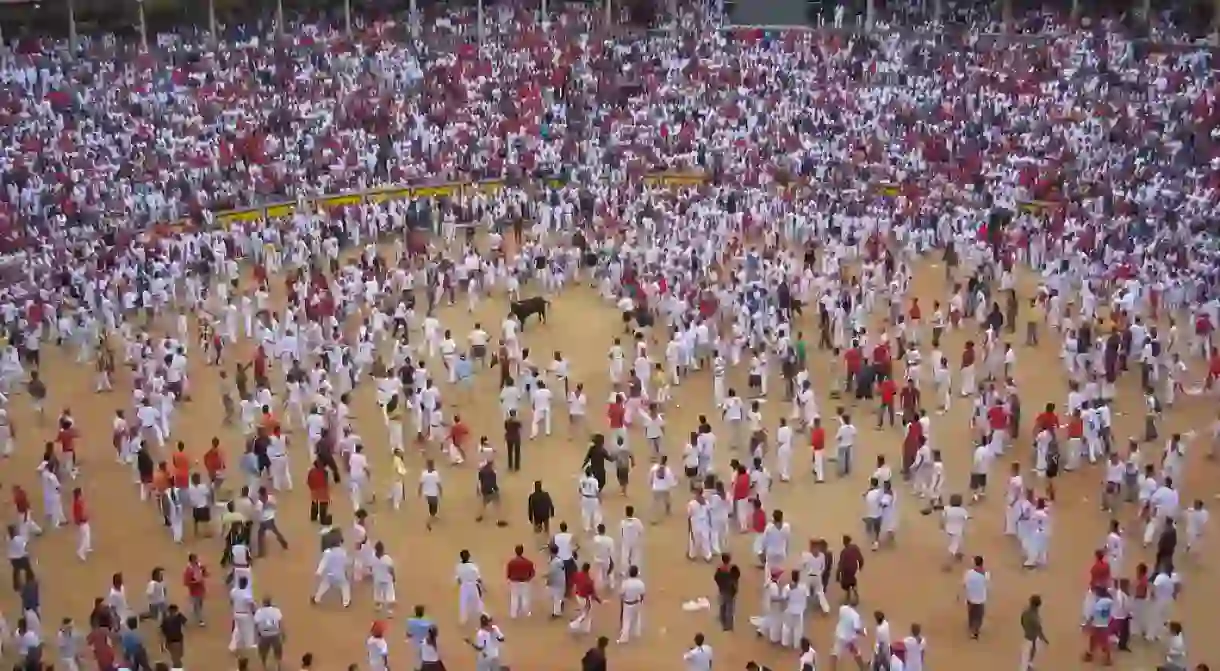10 Things You Never Knew About the San Fermín Running of the Bulls Festival, Pamplona

The San Fermín Festival or Running of the Bulls is the most important event on Pamplona’s calendar and is really what put the city on the map. While photos or videos of this adrenaline-fuelled festival are widespread, less well-known are the history and traditions surrounding the event. Here are 10 things you never knew about the San Fermín Running of the Bulls Festival.
The festival honours a saint
As the name suggests, the festival honours San Fermín, the city’s patron saint, who was the first bishop of Pamplona.

It’s hundreds of years old
The festival dates back hundreds of years and is thought to have begun in 1385. While the festival has changed much over the years, the main traditions have remained the same.
Traditional songs are sung throughout the festival
The most important song during the event is La canción del Encierro, which is sung three times before each bull run, in both Spanish and Basque. The runners gather on Santo Domingo Street in front of the Saint Fermín figure to sing and ask him for blessings and protection during the run. There is also another song called 1 de Enero, which is sung at all the parties associated with the festival, and another to mark the end of the festival called Pobre de Mi.

Pamplona’s butchers began the tradition
It is said that the town’s butchers were the first to start the festival when they had to transport bulls from the ranches outside Pamplona to the bullring. They would hire the bull minders called pastores to accompany them. The young butchers began running in front of the bulls to make them run faster, and it soon turned into a kind of competitive event, with many of the locals joining in.
Many have died during the festival
The Running of the Bulls event is not one to be taken lightly. Many of the local runners spend years training for the event and know the ins and outs of Pamplona’s streets intimately. Think twice if you’re thinking of running. Since records began in 1910, around 16 people have died during the event, and 50 to 100 people have been injured during the festival each year.

It’s illegal to take a selfie during the event
Because it’s so dangerous and you have to keep your wits about you at all times, selfies have been banned on the course, while the run is taking place. If you’re seen with a camera trying to take a selfie, you could be arrested. Other rules include no one under the age of 18 and no one who has been drinking.
Costumes are worn
You can’t just wear anything to the Running of the Bulls festival – to fit in and show respect, you should wear the official costume or uniform. This consists of plain white clothes with a red scarf or handkerchief tied round the neck. Some say that the white represents San Fermín, while the red shows that he was killed. Others say that the uniform represents the butchers who started the tradition of the bull runs.

In the past, women were not allowed to run with the bulls
In the past, women were forbidden for taking part in the event. Today it is becoming more accepted, but is still frowned up by many older locals. You will see women running in the event if you go, however they are mostly foreigners rather than Spanish women.
There are many runs which last all week
The festival doesn’t just involve one bull run, there are in fact many different runs taking place all week. Most of the bull runs occur in the early mornings, whilst the other festivities occur in the late afternoons and evenings.
It’s not all about the bulls
There are many other elements to the festival, so even if you’re not interested in running with the bulls or don’t like the idea of bull fighting at all, then you can learn all about Navarrese culture instead. Parades, giants, concerts and dancing are all part of the festival. traditional food are all part of the event.














